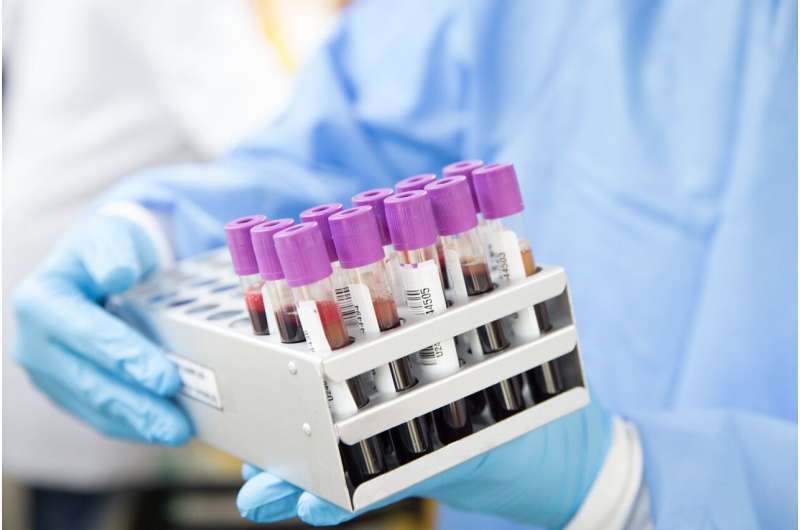Microfluidic circuit for pulsatile filtration of extracellular vesicles from whole blood samples

Extracellular vesicles (EVs) are cell-secreted lipid bilayer bioparticles with a diameter of 30 to 250 nm. They are a promising source of biomarkers for liquid biopsies for early cancer diagnosis and real-time monitoring of tumor development. However, analysis of nanosized EVs in blood samples has been hampered by the lack of effective, rapid, and standardized methods to isolate and purify EVs.
In a study published in Science Advances, Sun Jiashu’s group from the National Center for Nanoscience and Technology (NCNST) of the Chinese Academy of Sciences (CAS) and collaborators from the Fifth Medical Center of the Chinese PLA General Hospital have devised cascaded microfluidic circuits comprising a cell-removal circuit and an EV-isolation circuit to achieve pulsatile filtration of EVs directly from whole blood samples in a rapid, high-yield, and high-purity manner.
“The key design of the cascaded microfluidic circuits is based on an electric-hydraulic analogy,” said Li Zhenglin from NCNST, first author of the paper.
By mimicking the function of electric circuits, the researchers fabricated microfluidic circuits with an elastomeric membrane (fluidic capacitor), check valve (diode), and microchannels (resistors); thus, the microfluidic circuits could generate pulsatile flows under pulsatile pressure without requiring complex control systems.
Through integration with a polycarbonate membrane filter (pore size of 600 nm, for plasma extraction) and an anodic aluminum oxide membrane filter (pore size of 20 nm, for EV purification), these cascaded microfluidic circuits successfully isolated and purified EVs directly from blood samples within 30 minutes, which is superior to the ultracentrifugation method and dead-end filtration method.
The clinical potential of isolated EVs was further explored with a one-step polyethylene glycol-enhanced thermophoretic aptasensor. By detecting the expression levels of epithelial cellular adhesion molecules on EVs, precise discrimination between nonmetastatic breast cancer patients and healthy donors was achieved, with an overall accuracy of 91%.
“The cascaded microfluidic circuits display efficient and robust isolation of EVs without the requirement of complex external equipment, and will have a distinct improvement in the field of microfluidic membrane filtration,” said Sun Jiashu from NCNST, one of the paper’s corresponding authors.
More information:
Zhenglin Li et al, Cascaded microfluidic circuits for pulsatile filtration of extracellular vesicles from whole blood for early cancer diagnosis, Science Advances (2023). DOI: 10.1126/sciadv.ade2819. www.science.org/doi/10.1126/sciadv.ade2819
Citation:
Microfluidic circuit for pulsatile filtration of extracellular vesicles from whole blood samples (2023, April 21)
retrieved 21 April 2023
from https://phys.org/news/2023-04-microfluidic-circuit-pulsatile-filtration-extracellular.html
This document is subject to copyright. Apart from any fair dealing for the purpose of private study or research, no
part may be reproduced without the written permission. The content is provided for information purposes only.
For all the latest Science News Click Here
For the latest news and updates, follow us on Google News.

